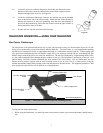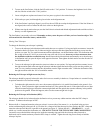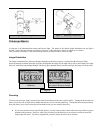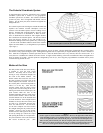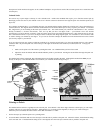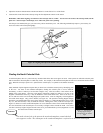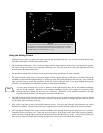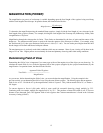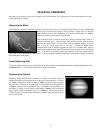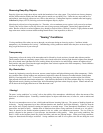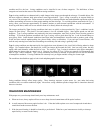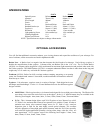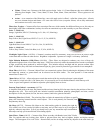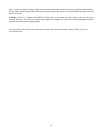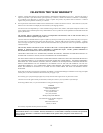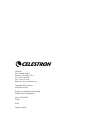
15
condition and five the best. Seeing conditions can be classified in one of three categories. The definitions of these
categories are based on the causes of the different seeing conditions.
Type 1 seeing conditions are characterized by rapid changes in the image seen through the telescope. Extended objects, like
the moon, appear to shimmer while point sources (stars) appear double. Type 1 seeing is caused by air currents within, or
very close to, the telescope tube. These currents are caused by a telescope that has not reached thermal equilibrium with the
outdoor surroundings or heat waves from people standing near the telescope. To avoid the problems associated with Type 1
seeing, allow your telescope approximately 30 minutes outdoors to reach thermal equilibrium with the environment. If
observing with others, make sure no one stands in front of or directly below the telescope tube.
The images produced by Type 2 seeing conditions don't move as quickly as those produced by Type 1 conditions, but the
images are quite blurry. Fine detail is lost and contrast is low for extended objects. Stars appear spread out and lack
sharpness. Type 2 seeing conditions are produced in the lower atmosphere, most likely by heat waves from the ground or
buildings. To avoid the problems associated with Type 2 seeing, select a good observing site. Look for broad hilltops or
open grassy fields. Stable thermal conditions found near lakes and atmospheric inversions tend to produce good seeing.
Avoid sites that overlook asphalt parking lots, plowed fields, valleys or shorelines. If you can't get a better location, wait
until the early morning hours when the surroundings are uniformly cool and seeing is generally better.
Type 3 seeing conditions are characterized by fast ripples that create shimmer in the visual field, affecting otherwise sharp
images. For extended objects, fine details are visible, but images shift around the field. Stars are crisp points, but they
rapidly shift small distances within the field of view. The cause of Type 3 seeing is turbulence in the upper atmosphere,
which means the observer has no control over it. However, the effects of Type 3 seeing are generally less pronounced than
those of Type 1 and 2 conditions. Type 3 seeing conditions can’t really be avoided, so your best bet is to wait for moments
of atmospheric steadiness. If seeing conditions are extremely bad, you might consider waiting for a better night.
The conditions described here apply to both visual and photographic observations.
Figure 13
Seeing conditions directly affect image quality. These drawings represent a point source (i.e., star) under bad seeing
conditions (left) to excellent conditions (right). Most often, seeing conditions produce images that lie somewhere between
these two extremes.
T
T
E
E
L
L
E
E
S
S
C
C
O
O
P
P
E
E
M
M
A
A
I
I
N
N
T
T
E
E
N
N
A
A
N
N
C
C
E
E
With proper care your telescope should rarely need any maintenance work.
A. When not in use, always replace all lens covers to keep dust and contaminants off the optical surfaces.
B. A small amount of dust on any optical surface is ok. If the dust builds up then use a can of compressed air and then a
camel's hair brush to remove the dust.
C. If the lens need cleaning, it should be cleaned by a professional. Either have your instrument serviced by a telescope
repair facility or return it to the factory.



